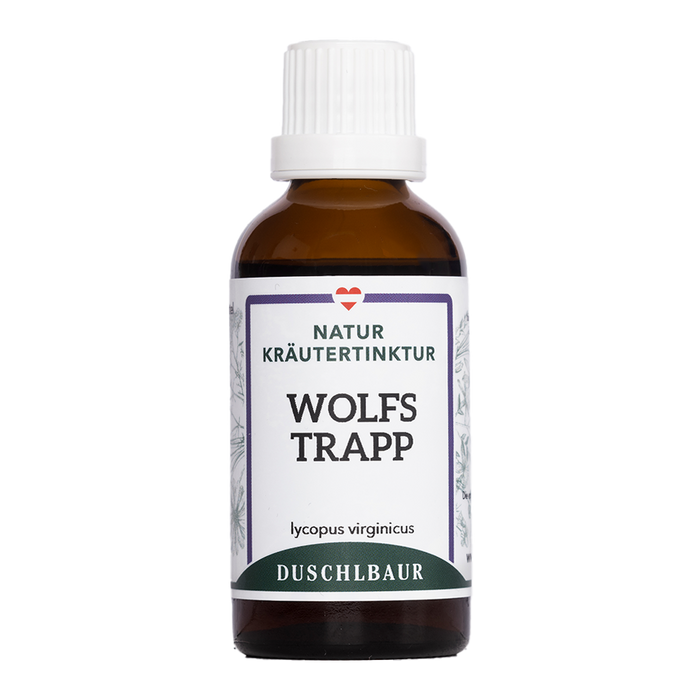The natural ingredients of theWolfsbane tincture dropsare: water, alcohol, wolfsbane.
We use the herb to produce these very valuable drops.
The wolf's bane plant was long used to dye linen, wool, and silk. A decoction of wolf's bane and alum gave the fabrics a durable black color.
The Wolf's bane is often found on the banks of flowing and standing waters, in damp ditches and on wet meadows.
Botanically, the wolf's bane belongs to the mint family (Lamiaceae). The North American species from Virginia (Lycopus virginicus) is somewhat smaller than the European species (Lycopus europaeus).
Wolf's bane grows as a herbaceous perennial up to 1 m tall. The leaves are lanceolate to ovate, deeply and coarsely toothed, and only the lower leaves are pinnately divided.
During flowering in midsummer, small, white to pink, lipped flowers, measuring four to six millimeters, appear in the upper leaf axils. In autumn, the wolf's bane pushes its flowers, which form on the runners, underground, where self-fertilization and fruit formation occur.
Wolf's bane is one of the few plants capable of influencing the human hormonal system. The healing powers of wolf's bane were already known to the native peoples of the North American continent. They boiled the fresh herb and used the decoction as a sedative, to stop bleeding, and to treat nervous heart problems.
At the beginning of the 20th century, the effects of European wolf's bane (Lycopus europaeus) were discovered on the European continent. Initially, its calming effect on the heart was recognized. Further studies demonstrated positive effects on hyperthyroidism. Even small amounts of wolf's bane can alleviate the symptoms caused by hyperthyroidism.







